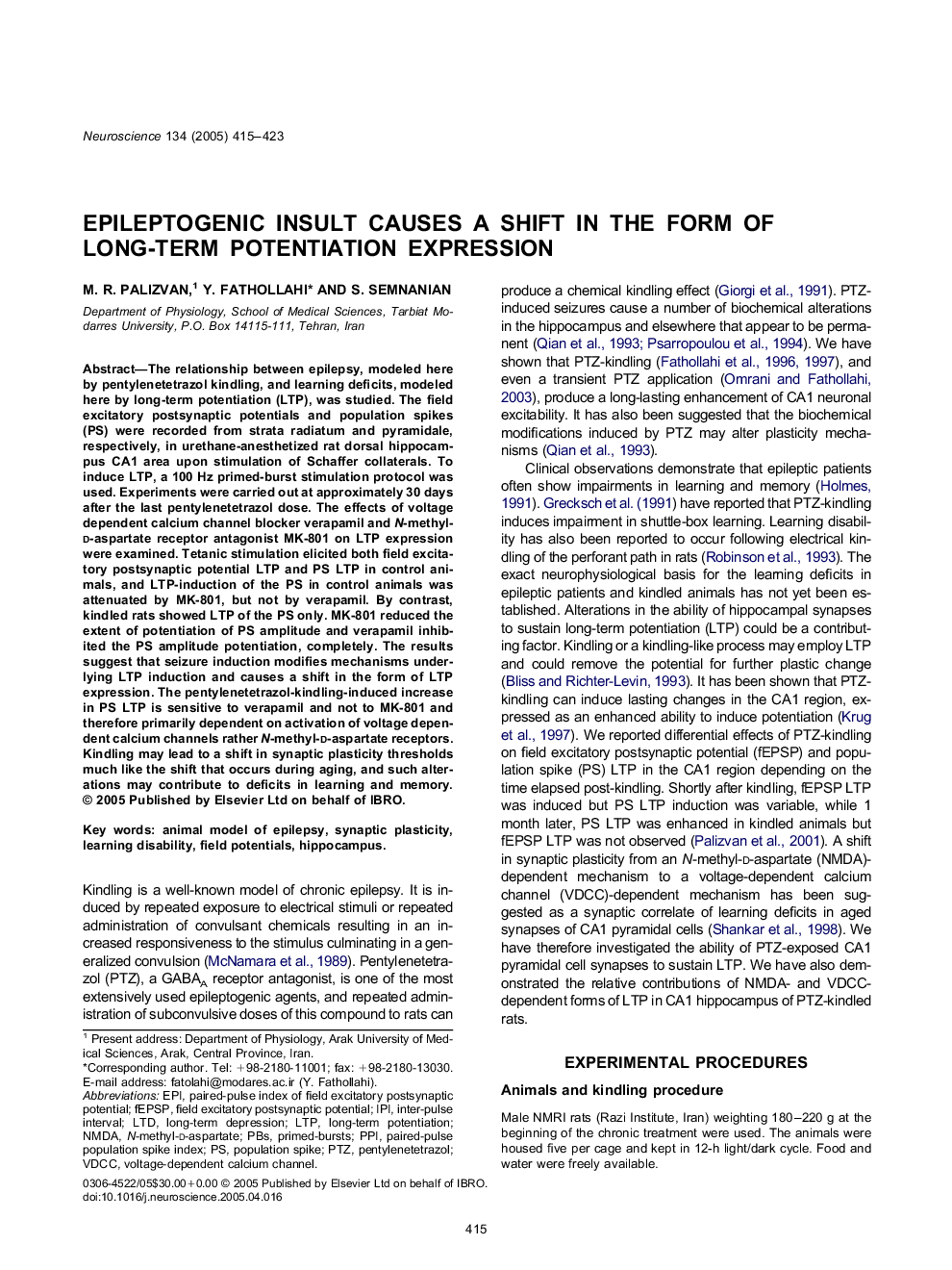| کد مقاله | کد نشریه | سال انتشار | مقاله انگلیسی | نسخه تمام متن |
|---|---|---|---|---|
| 9425725 | 1295889 | 2005 | 9 صفحه PDF | دانلود رایگان |
عنوان انگلیسی مقاله ISI
Epileptogenic insult causes a shift in the form of long-term potentiation expression
دانلود مقاله + سفارش ترجمه
دانلود مقاله ISI انگلیسی
رایگان برای ایرانیان
کلمات کلیدی
EPIVDCCAnimal model of epilepsyinter-pulse intervalIPIfEPSPN-methyl-d-aspartatePBSNMDAPTZPPIPopulation spike - افزایش جمعیتlong-term depression - افسردگی طولانی مدتlong-term potentiation - تقویت درازمدتLTP - تقویت طولانی مدت یا LTP LTD - محدودLearning disability - ناتوانی در یادگیریHippocampus - هیپوکامپ Field potentials - پتانسیل میدانField excitatory postsynaptic potential - پتانسیل پستنیپتیک مزمن تحریک پذیرSynaptic plasticity - پلاستیسیته سیناپسیpentylenetetrazol - پنتیلن تترازولVoltage-dependent calcium channel - کانال کلسیم وابسته به ولتاژ
موضوعات مرتبط
علوم زیستی و بیوفناوری
علم عصب شناسی
علوم اعصاب (عمومی)
پیش نمایش صفحه اول مقاله

چکیده انگلیسی
The relationship between epilepsy, modeled here by pentylenetetrazol kindling, and learning deficits, modeled here by long-term potentiation (LTP), was studied. The field excitatory postsynaptic potentials and population spikes (PS) were recorded from strata radiatum and pyramidale, respectively, in urethane-anesthetized rat dorsal hippocampus CA1 area upon stimulation of Schaffer collaterals. To induce LTP, a 100Hz primed-burst stimulation protocol was used. Experiments were carried out at approximately 30 days after the last pentylenetetrazol dose. The effects of voltage dependent calcium channel blocker verapamil and N-methyl-d-aspartate receptor antagonist MK-801 on LTP expression were examined. Tetanic stimulation elicited both field excitatory postsynaptic potential LTP and PS LTP in control animals, and LTP-induction of the PS in control animals was attenuated by MK-801, but not by verapamil. By contrast, kindled rats showed LTP of the PS only. MK-801 reduced the extent of potentiation of PS amplitude and verapamil inhibited the PS amplitude potentiation, completely. The results suggest that seizure induction modifies mechanisms underlying LTP induction and causes a shift in the form of LTP expression. The pentylenetetrazol-kindling-induced increase in PS LTP is sensitive to verapamil and not to MK-801 and therefore primarily dependent on activation of voltage dependent calcium channels rather N-methyl-d-aspartate receptors. Kindling may lead to a shift in synaptic plasticity thresholds much like the shift that occurs during aging, and such alterations may contribute to deficits in learning and memory.
ناشر
Database: Elsevier - ScienceDirect (ساینس دایرکت)
Journal: Neuroscience - Volume 134, Issue 2, 2005, Pages 415-423
Journal: Neuroscience - Volume 134, Issue 2, 2005, Pages 415-423
نویسندگان
M.R. Palizvan, Y. Fathollahi, S. Semnanian,